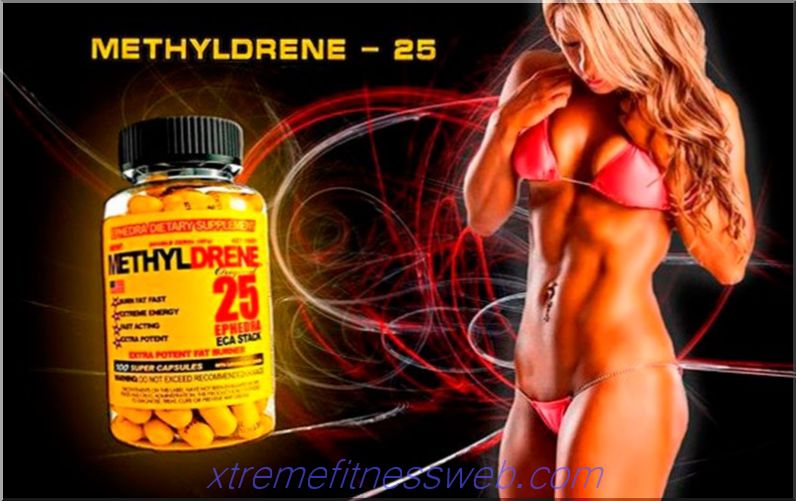- Menstrual phase
- Is it possible to practice during menstruation
- Determination of the phase of the menstrual cycle
- If you are taking contraceptives ">
Summarizing

To achieve good athletic performance, you have to do a lot of hard and regular exercise. Women, unfortunately, sometimes have to deviate from this rule because of the menstrual cycle, since not all the fair sex are sufficiently aware of physical activity in this period. Most girls who want to stay in great shape try to use every opportunity for training. Such zeal, of course, is commendable, but in moderation. Trying to maintain harmony, one should not neglect one's own health, study all aspects of this issue in advance, find out when and what exercises can or cannot be done.
Most women who continue to train during critical days show a sharp decrease in motivation for playing sports. It becomes impossible to maintain the usual intense rhythm, that is, both speed and the number of mastered sets with approaches are reduced. Some also notice the fact that recovery from physical exertion during the menstrual cycle is much worse and less qualitative. This is quite normal, since the menstrual cycle affects the metabolic rate, general stamina and other factors that are directly related to sports.
Critical days have several phases. Each is characterized by certain hormonal changes. If you have a clear idea of their relationship with each other, you can change the situation in your favor and train with the greatest possible return. This will not reduce the effectiveness of classes and maintain your body and body in good shape.
Content
- 1 Phases of the menstrual cycle
- 1.1 Follicular
- 1.2 Ovulation
- 1.3 Luteal
- 2 Is it possible to exercise during menstruation
- 2.1 Whether to engage in monthly periods in the previous mode "> 2.2 Training in the follicular phase should be as intense as possible
- 2.3 Luteal phase requires rest and rest
- 3 Determination of the phase of the menstrual cycle
- 4 If you are taking contraceptives?
- 5 Summary
Menstrual phase

To understand what exercises and when is best done on critical days, you need to know how the female menstrual cycle is built. It consists of several phases, each of which has its own characteristics.
Follicular
The first phase, which falls on the first day of the menstrual period, and ends with the onset of ovulation. It is characterized by the development of follicles in the ovary, which is easy to understand by its characteristic name. In the first days of this phase (from five or more), the uterine mucosa secretes tissues and blood. In the very first days, the concentration of estrogen is the lowest, and then begins to increase. This leads to stimulation of follicular growth.
In some sources, there is such a name for the hormone as estradiol. It is the main hormone of the estrogen group and is produced in the reproductive phase. FSH or follicle-stimulating hormone is responsible for the production of follicles, and LH or luteinizing hormone is responsible for the onset of ovulation and regulation of progesterone secretion. The duration of the follicular phase is about two weeks, that is, it does not end with the end of critical days.
Ovulation

This phase is characterized by the fact that a mature egg ready for fertilization leaves the ovary. Estrogen and luteinizing hormone reach their maximum level. Progesterone begins to rise rapidly, which affects the higher temperature of the whole body.
Luteal
It comes after the end of the ovulation period and ends when the next menstruation begins. During this phase, the mucous membrane on the label begins to increase. This means that she is preparing for a possible fertilization of the egg and pregnancy.
Estrogen and progesterone begin to increase. Their growth leads first to an increase, and then to a decrease in the temperature of the female body. The latter occurs when conception has not occurred. The phase lasts about fourteen days and critical days begin if pregnancy has not occurred.
Is it possible to practice during menstruation

The menstrual cycle is characterized by significant fluctuations and changes in the hormonal background of a woman. They affect not only the reproductive functions of the body, but also affect the condition. In order not to worsen your well-being, you need to know how to use these fluctuations to the benefit of training and your own health.
Whether to engage in menstruation in the previous mode "> Training in the follicular phase should be as intense as possible

This is due to the fact that the level of testosterone becomes high, which favorably affects the indicators of endurance, strength, and muscle mass gain. At this phase, it is best to do strength training. In some cases, the pain threshold even increases, and this allows you to train even more effectively.
The disadvantage of this period is that the metabolic rate decreases and much less energy is consumed at rest. This does not mean that classes will not be useful. Endurance and strength develop as quickly and well as possible, and, therefore, this phase is ideal for intensive training.
Here you need to remember a good workout. It reduces the risk of injury, since increased estrogen levels and hormonal changes make the woman’s body and body more vulnerable. If you warm up well before class, no problems should arise.
Luteal phase requires rest and rest
During this period, the woman quickly becomes tired. High body temperature, which is aggravated in hot weather, does not allow you to exercise normally. On such days, you should abandon physical activity, and give preference to rest. If you play sports, then at a gentle, but not at an intense pace. You should not be upset about the feeling of fatigue. It’s better to give yourself a break, because this way the body lets you know that it needs a state of rest.
Many women do not want to give up classes, afraid to get better. In the luteal phase, the metabolic rate is quite high, so calories are burned in larger quantities. Sensitivity to insulin in most cases becomes lower, and, therefore, it is necessary to include fats with proteins, and not carbohydrates, in your menu. Against the background of decreased estrogen and increased progesterone, fats in the body are used as an energy source.
Determination of the phase of the menstrual cycle

To accurately determine the phase, it is necessary to calculate the number of days after the completion of critical days. If it is normal, then each new cycle begins after 28 days, but in most cases deviations are observed.
When you want to be sure of the phase, basal temperature is measured in the morning. In the follicular phase, it is lower, and after ovulation and in the luteal phase, on the contrary, it is elevated, remaining this until the onset of menstruation. You can download a special application that will help track the cycle.
If you are taking contraceptives "> Summarizing
Training or not during critical days is an exclusively individual decision of every woman. The main thing is to try to abandon intense and serious stresses in the luteal phase. You should not be upset and try to carry out the training as usual, if there is a general breakdown and fatigue. You need to listen to your body, which through hormones makes it clear when you can do it, and when it's better to relax.
There is no single “recommendation” suitable for all women. Some of them feel great during the menstrual period and enjoy training, while others, on the contrary, cannot make the usual number of approaches. Each organism has its own individual characteristics. If it is difficult to find the optimal schedule for yourself, you can contact a specialist who, taking into account the cycle, will help to understand this issue without harm to health.







